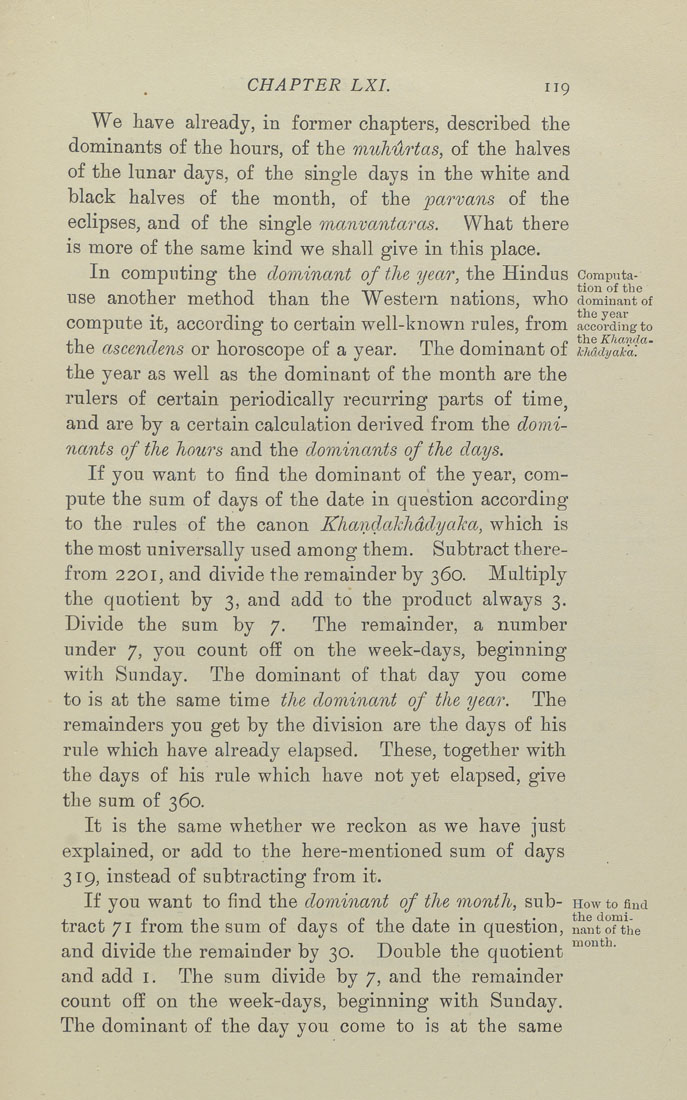CHAPTER LXI. 119
We have already, in former chapters, described the
dominants of the hours, of the mithiXrtas, of the halves
of the lunar days, of the single days in the white and
black halves of the month, of the parvans of the
eclipses, and of the single manvctntarcts. What there
is more of the same kind we shall give in this place.
In computing the dominant of the yectr, the Hindus computa-
use another method than the Western nations, who dominant of
compute it, according to certain well-known rules, from accordtng to
.1 7 1 p rm -1 • . f the Khanda.
the ascendens or horoscope of a year. The dominant of khadyaka.
the year as well as the dominant of the month are the
rulers of certain periodically recurring parts of time,
and are by a certain calculation derived from the domi¬
nants of the hours and the dominants of the days.
If you want to find the dominant of the year, com¬
pute the sum of days of the date in question according
to the rules of the canon Khanclctkhddyaka, which is
the most universally used among them. Subtract there¬
from 2201, and divide the remainder by 360. Multiply
the quotient by 3, and add to the product always 3.
Divide the sum by 7. The remainder, a number
under 7, you count off on the week-days, beginning
with Sunday. The dominant of that day you come
to is at the same time the dominant of the year. The
remainders you get by the division are the days of his
rule which have already elapsed. These, together with
the days of his rule which have not yet elapsed, give
the sum of 360.
It is the same whether we reckon as we have just
explained, or add to the here-mentioned sum of days
319, instead of subtracting from it.
If you want to find the dominant of the month, sub- iiow to find
tract 71 from the sum of days of the date in question, nantofthe
and divide the remainder by 30. Double the quotient
and add i. The sum divide by 7, and the remainder
count off on the week-days, beginning with Sunday.
The dominant of the day you come to is at the same
|








